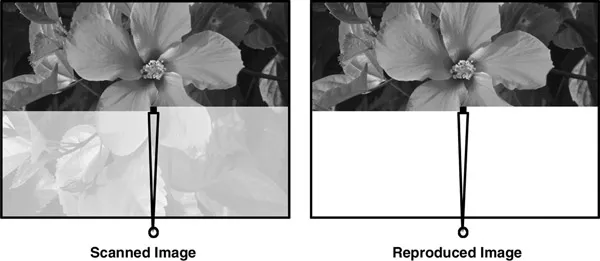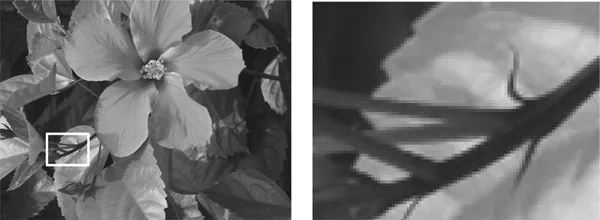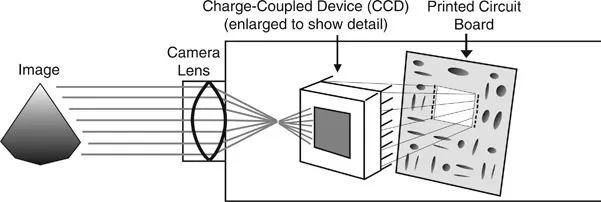![]()
1
Introduction
Since the development of broadcast cameras and television sets in the early 1940s, video has slowly become more and more a part of everyday life. In the early 1950s, it was a treat simply to have a television set in one’s own home. In the 1960s, television brought the world live coverage of an astronaut walking on the moon. With the 1970s, the immediacy of television brought the events of the Vietnam War into living rooms. In the 21st century, with additional modes of delivery such as satellite, cable and the Internet, video has developed into the primary source of world communication.
However, while the television set itself provided a cool fire around which many families in the 20th century sat, today many people choose to watch their favorite TV shows and movies on their computers and mobile devices. Without the anchor of the older delivery medium, video content has become king and websites such as YouTube and Vimeo, and subscriber-based services such as Netflix, Hulu and Amazon, have become a major part of the video fabric of our on-the-go lives.
Video Evolution
Just as the use of this medium has changed over the years, so has its physical nature evolved. The video signal started as analog and has developed into digital with different types of digital formats. When television was first created, cameras and television sets required a great deal of room to house the original tube technology of the analog world. In today’s digital society, camera size and media files continue to get smaller as the quality continues to improve.
For example, when this book was first published, High Definition was becoming the format of choice. Now the industry is creating programming in Ultra High Definition (4K), which has over twice the resolution of High Definition. This expansion in resolution and ease of use has caused many producers to choose the digital route over shooting on film for their projects.
Although the equipment has changed, some of the processes involved in the origination of the video signal have remained the same. This makes the progression of video from analog to digital not only interesting to study, but helpful in providing a foundation of knowledge upon which the current digital video world operates. So much of today’s digital technology is the way it is because it evolved from analog.
Analog and Digital
Let’s consider the analog and digital realms. All information from the physical world is analog. A cloud floating by, an ocean wave, and the sounds of a marching band all exist within a spectrum of frequencies that comprise human experience. This spectrum of frequencies can be captured by any number of digital cameras and
recording equipment and then translated to any number of digital file types made up of digital data, or zeros and ones, representing the image or sound.
Figure 1.1
From Analog to Digital to Analog
Human beings, however, do not process the zeros and ones of digital data. Eventually that data must be converted back to an analog form so we humans can see and hear it. Even with a digital home receiver and other viewing or listening devices, the zeros and ones of a digital signal must eventually be reproduced as analog for humans to experience it with their sight and sound senses (Figure 1.1).
Signal Reproduction
In the early days of television, video was recorded and reproduced as an analog signal on a videotape machine, which was based on mechanical concepts. The videotape machine moved the videotape along guides and through magnetic heads that recorded or played back the signal. As a result of the videotape moving through a mechanical system, the information could only be recorded or reproduced in the order in which it was created. This made post production of videotape, or the editing and manipulating of content after it was shot, a linear process with no instant access.
Figure 1.2
Analog Videotape Recording vs Digital Video Production
With the advent of digital, the primary system for signal reproduction has become solid-state electronics, incorporating computers, servers and digital cards. This change has created a computer file-based system, rather than the taped-based mechanical system of the analog era. File-based systems allow random, or nonlinear, access to information without respect to the order in which it was produced or its placement within the storage medium (Figure 1.2).
While most cable companies, broadcast stations, Internet companies, and production or post production facilities create, edit and transmit video signals using a digital file-based system, some facilities still have older videotape machines for inclusion of legacy (analog) content.
About This Book
To create a complete picture of the video process—and answer the question “How does video work?”—this book begins by examining the analog video signal. Digital video technology is a direct evolution from the analog system. Having the knowledge of the analog system provides a firm foundation before moving into a discussion of digital, and how video works today in the new age of digital distribution.
While this book is designed to cover the process of creating a video signal, storing it, and transmitting it in a professional environment, the same information and concepts apply to any video tool, including consumer equipment.
![]()
2
Creating a Video Image
Video starts with a camera, as does all picture taking. In still and motion-picture film photography, there is a mechanical system that controls the amount of light falling on a strip of film. Light is then converted into a pattern of varying chemical densities on the film. In digital photography, the light from an object goes through a lens, as it does in film photography. On the other side of the video camera lens, however, light is converted to an image by an electronic process as opposed to a mechanical or chemical process. The medium for this conversion has changed over the years. It began with tube cameras and has progressed to completely electronic components.
Tube Cameras
While the tube pickup has been replaced with digital technologies, the process of scanning the image that the tube used has implications for current systems.
In a video tube camera, the lens focuses the image on the face of a pickup tube inside the camera. The face of the pickup tube is known as the target (Figure 2.1). The target is light-sensitive, like a piece of film. When light shines on the face of the target, it conducts electricity in proportion to the amount of light that is striking its surface. Without light on the face of the target, the target resists the flow of electricity.
Figure 2.1 (A) Camera Focusing on Image and (B) Tube Camera Target Area
A stream of electrons, called the beam, comes from the back end of the tube and scans back and forth across the face of the target on the inside of the pickup tube. The electrical current generated is either allowed to pass from the target to the camera output or not, depending on the amount of resistance at the face of the target.
The amount of resistance varies depending on how much light is shining on the target. The electrical signal that flows from the target is, in effect, the electronic re-creation of the light coming from the scene at which the camera is aimed.
Scanning the Image
When a camera sees an object, it begins scanning the image. The beam of electrons sweeps back and forth across the inside face of the target. Where the electron beam strikes the face of the target, it illuminates an area the same size as the electron beam (Figure 2.2). The resulting electrical signal is a continuous flow of varying voltages representing the light that struck the target. Without some information about where the scanning dot was positioned there would be no way for the receiver to know where to start and end the picture. In a later chapter we will see how that is accomplished.
NOTE In a digital video signal, these picture elements are called pixels, short for picture elements (Figure 2.3).
Figure 2.2 Scanning and Reproducing an Image
Figure 2.3 Magnified Picture Elements
In the television system that was used in the United States, the electron beam would scan back and forth across the target 525 times in each television frame. Thus each frame in the television signal was composed of 525 scan lines. It did not matter what size the camera was or what size the pickup tube or monitor was. The total number of lines scanned from the top of the frame to the bottom of the frame would always be 525.
The image created in the video camera had now been turned into an electronic signal of varying voltages. As an electronic signal, the television image can be carried by cables, recorded, or even transmitted through the air.
Displaying the Image
The varying voltages generated by the camera could be converted back into light. This electrical energy powered an electron gun in the television receiver or monitor. That gun sent a stream of electrons to the face of the picture tube in the receiver. Changing voltages in the video signal caused chemical phosphors on the inside face of the receiver tube to glow with intensity in direct proportion to the amount of voltage. The image that originated in the tube camera is thus recreated, line by line. Motion and detail were all reproduced.
Camera Chips
Over the years, the pickup tubes and the scanning yokes needed to drive the tube cameras have been eliminated and replaced by light-sensitive chips (Figure 2.4). There are two technologies commonly used for chip camera pickups, CCD and CMOS. CCD is a charge-coupled device. CMOS is short for complementary metal – oxide–semiconductor. First found in still cameras, this technology is now also common in video cameras as well.
Figure 2.4 CCD Camera Focused on Image
A CCD is a chip that contains an area, or site, covered with milli...






